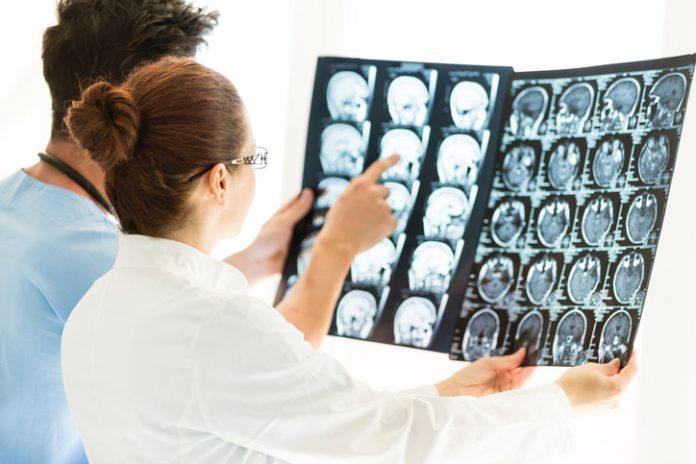
The OGDHL (oxoglutarate dehydrogenase-like) gene that encodes a key protein required for normal function of the mitochondria and its chaperone nardilysin (NRD1) are linked to progressive loss of neurological function in humans, according to an international team of researchers who published their findings in Neuron (“Loss of Nardilysin, a Mitochondrial Co-chaperone for α-Ketoglutarate Dehydrogenase, Promotes mTORC1 Activation and Neurodegeneration”).
“In our research we look for genes whose loss of function results in deterioration of neurological functions in the fruit fly Drosophila melanogaster,” said first author Wan Hee Yoon, Ph.D., postdoctoral fellow in the laboratory of Hugo Bellen, DVM, Ph.D., professor at Baylor College of Medicine, investigator at the Howard Hughes Medical Institute, and senior author of the paper. “In the fly we found that loss of function of nardilysin led to a slow, progressive neurodegeneration.”
Dr. Yoon and colleagues discovered that nardilysin helps the folding of an enzyme called α-ketoglutarate dehydrogenase (OGDH), present in mitochondria. Loss of nardilysin function results in loss of OGDH and a build-up of α-ketoglutarate (α-KG). High levels of α-KG increase a cellular response mechanism called mechanistic target of rapamycin (mTOR) that normally provides clearance of cellular components such as proteins and organelles. Dr. Yoon observed that mutation of nardilysin leads to abnormal build-up of α-KG, followed by mTOR activation and eventually to slow accumulation of cellular trash. Importantly, the drug rapamycin suppresses the neurodegenerative conditions caused by this accumulation of cellular garbage.
In 2009, a group led by Eiichiro Nishi in Japan genetically engineered a mouse to lack nardilysin.The mice developed neurological problems with motor coordination, balance, and memory issues, findings which at the time were not known to be linked to the mechanism described above in the fruit fly. The team led by Dr. Bellen realized that the results in fruit flies and in mice might suggest a role for nardilysin and its target protein OGDH in neurological problems in humans.
At the same time that Dr. Yoon was investigating nardilysin and its target protein OGDH, across the street co-author Ender Karaca, a Ph.D., postdoctoral fellow in the laboratory of James R. Lupski, M.D., Ph.D., at Baylor, was working to solve a rare disease by sequencing the patient's genome through the Baylor-Hopkins Center for Mendelian Genomics (BHCMG). Dr. Karaca had discovered a 16-year-old patient with a rare variant in OGDHL, who was unable to walk, was bound to a wheelchair, and whose head had not grown normally. Drs. Yoon and Karaca connected and realized that the mechanism in flies that Yoon was working on might explain the undiagnosed patient of Dr. Karaca.
“We realized that Ender had identified OGDHL as the top candidate gene for his patient at the same time that we were identifying OGDHL as a target of nardilysin,” said Dr. Yoon. “After we saw a patient with a severe disorder and variants in OGDHL, we wondered about nardilysin,” added Dr. Bellen.
The researchers then widened their search for similar patients by posting the information of the disease-causing variants of nardilysin in GeneMatcher, a web tool for rare disease researchers developed by the BHCMG Centers for Mendelian Genomics network. Researchers looking for patients carrying rare disease genes post the gene in GeneMatcher. If another researcher around the world has a patient with a matching gene, the teams can contact each other to share the information and collaborate. By posting nardilysin in GeneMatcher, Dr. Yoon and colleagues identified a patient whose DNA had been sequenced at the University of California in Los Angeles Clinical Genomics Center. The patient is a 15-year-old boy who presents with symptoms that are remarkably similar to those present in the patient identified by Dr. Karaca.
“We knew then that these two patients had a very similar disorder, but we had to prove that the genetic variants were causing their conditions,” said Drs. Yoon and Bellen.













